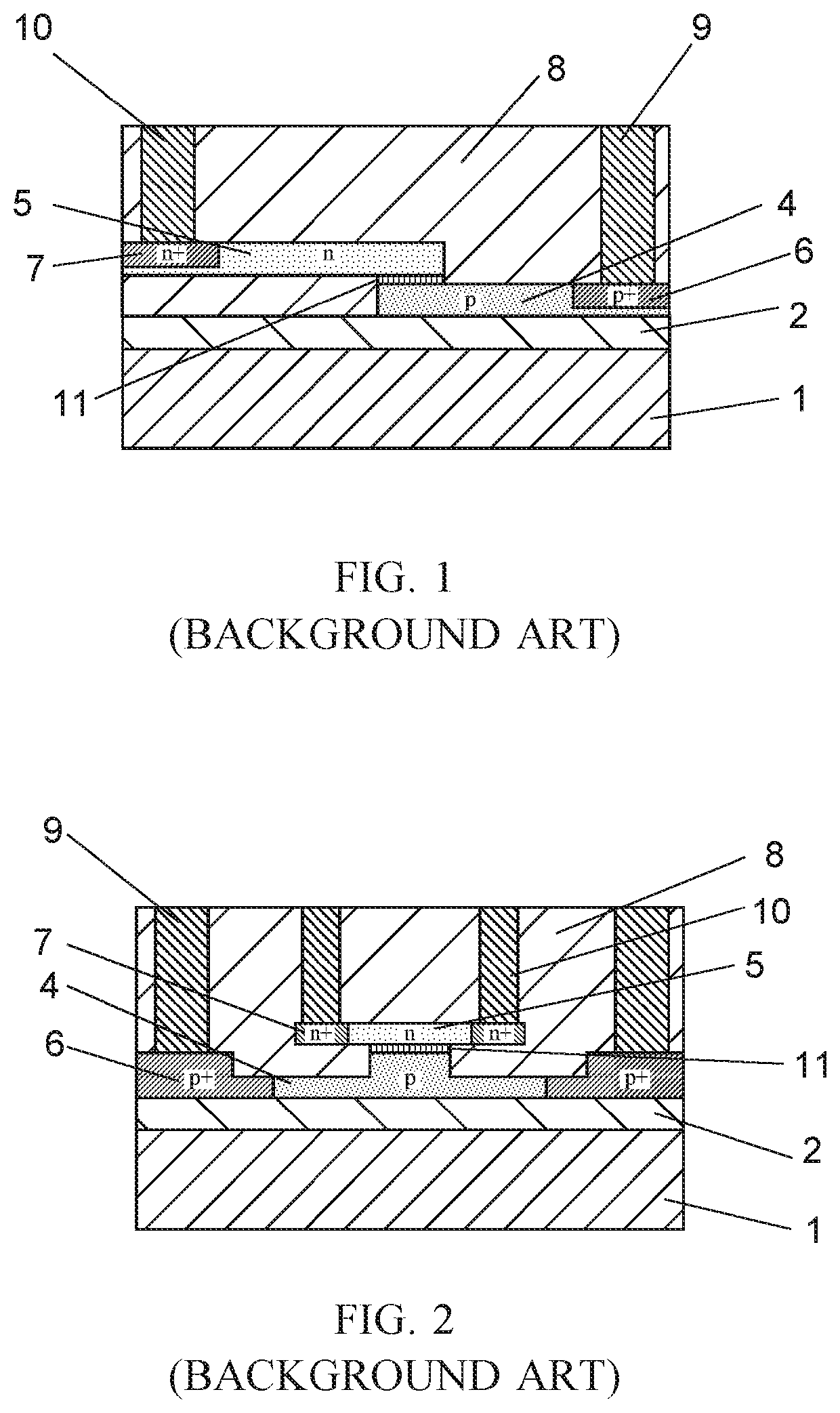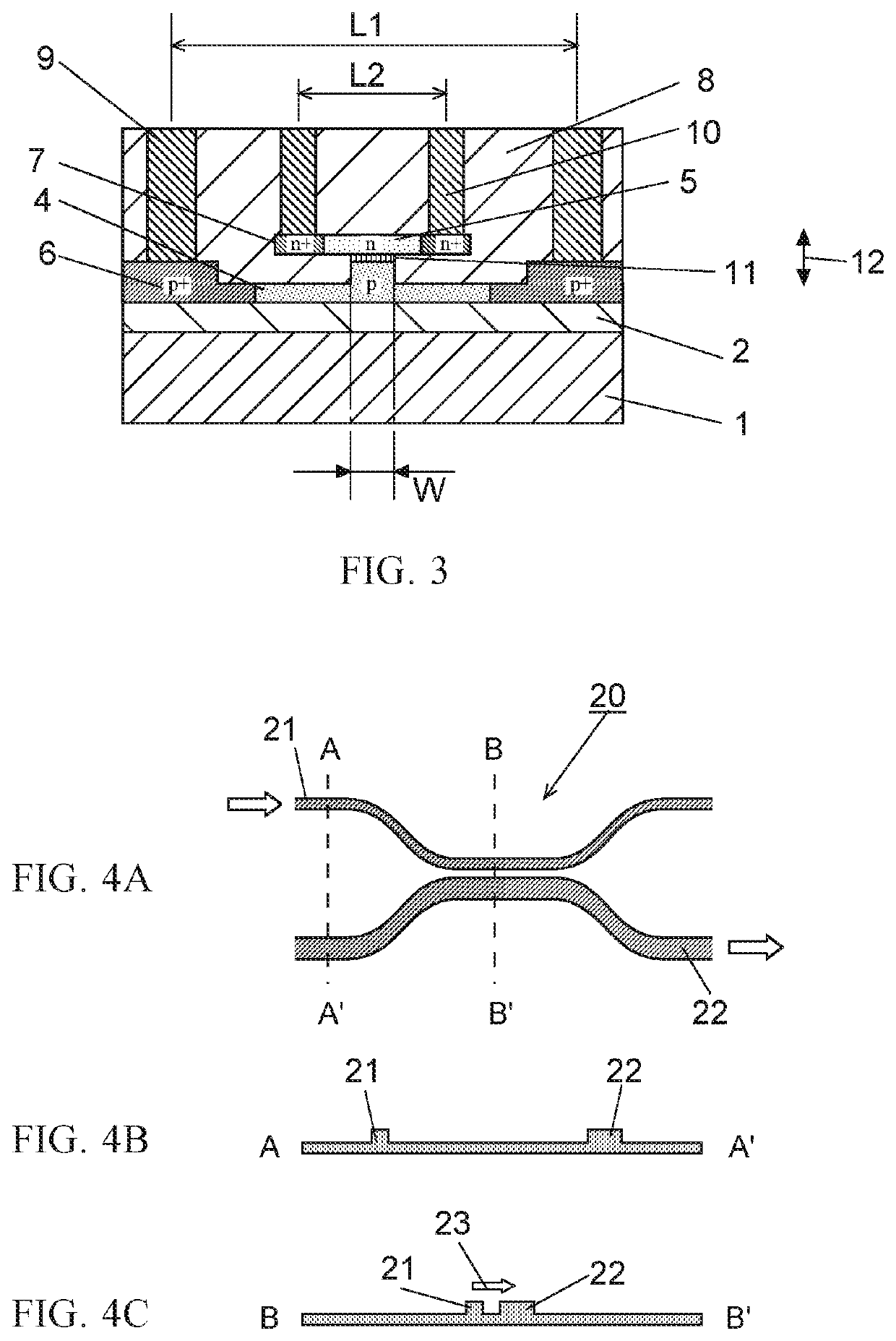Electro-optic modulator
a technology of optical modulator and optical modulator, which is applied in the field of optical modulator, can solve the problems of low modulation efficiency, limited use of such devices, and modulation length, and achieve the effects of improving modulation efficiency, high optical coupling efficiency, and reducing electric capacity and lead-out resistan
- Summary
- Abstract
- Description
- Claims
- Application Information
AI Technical Summary
Benefits of technology
Problems solved by technology
Method used
Image
Examples
Embodiment Construction
[0025]Hereinafter, the present invention will be described with example embodiments.
[0026]FIG. 3 is a cross-sectional view of an electro-optic modulator including an SIS structure according to one example embodiment of the present invention. Here, the first conductivity type is described as p-type and the second conductivity type is described as n-type, but conversely, the first conductivity type may be n-type and the second conductivity type may be p-type.
[0027]In FIG. 3, a first semiconductor layer 4 doped to exhibit a first type of conductivity (p-type conductivity) and a second semiconductor layer 5 doped to exhibit a second type of conductivity (n-type conductivity) are disposed parallel to support substrate 1 of an SOI substrate via buried oxide (BOX) layer 2 which constitutes a lower clad, and both semiconductor layers are at least partially stacked. Between the stacked semiconductor layers, a dielectric layer 11 is disposed to form SIS type junction. In FIG. 3, the first sem...
PUM
| Property | Measurement | Unit |
|---|---|---|
| wavelengths | aaaaa | aaaaa |
| wavelengths | aaaaa | aaaaa |
| thickness | aaaaa | aaaaa |
Abstract
Description
Claims
Application Information
 Login to View More
Login to View More - R&D
- Intellectual Property
- Life Sciences
- Materials
- Tech Scout
- Unparalleled Data Quality
- Higher Quality Content
- 60% Fewer Hallucinations
Browse by: Latest US Patents, China's latest patents, Technical Efficacy Thesaurus, Application Domain, Technology Topic, Popular Technical Reports.
© 2025 PatSnap. All rights reserved.Legal|Privacy policy|Modern Slavery Act Transparency Statement|Sitemap|About US| Contact US: help@patsnap.com



